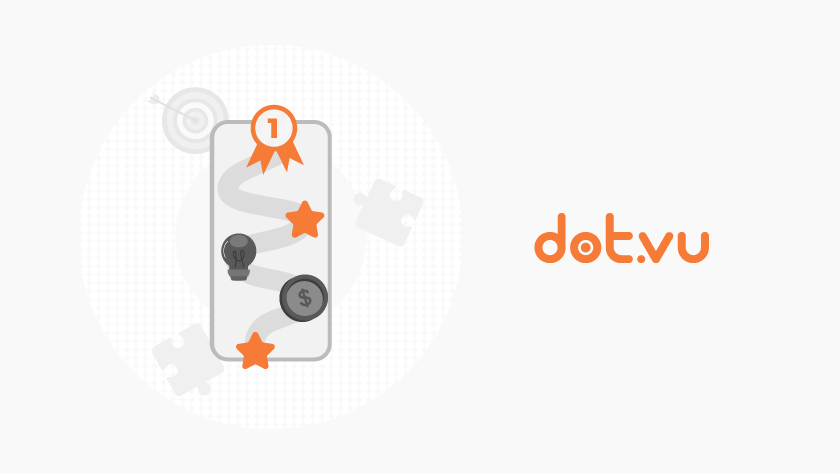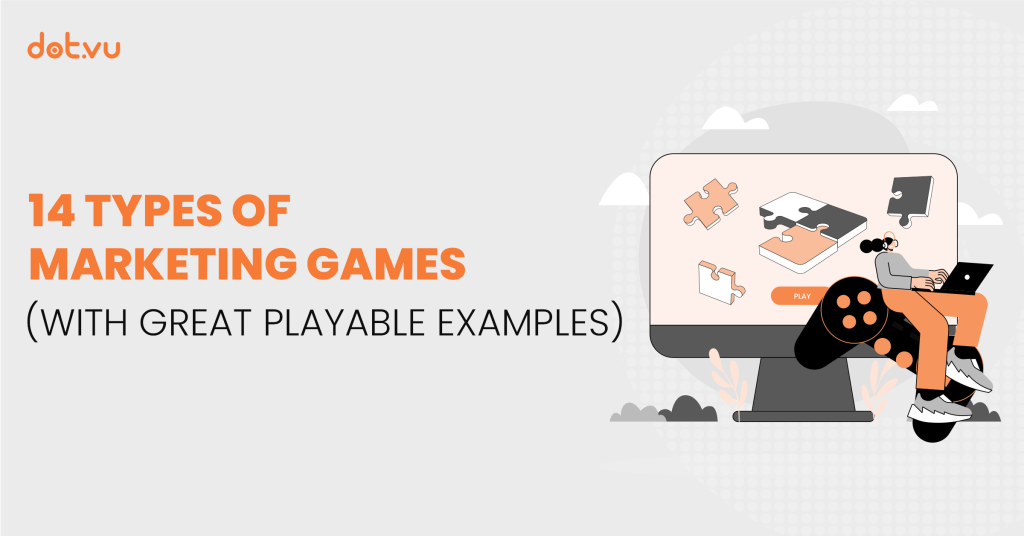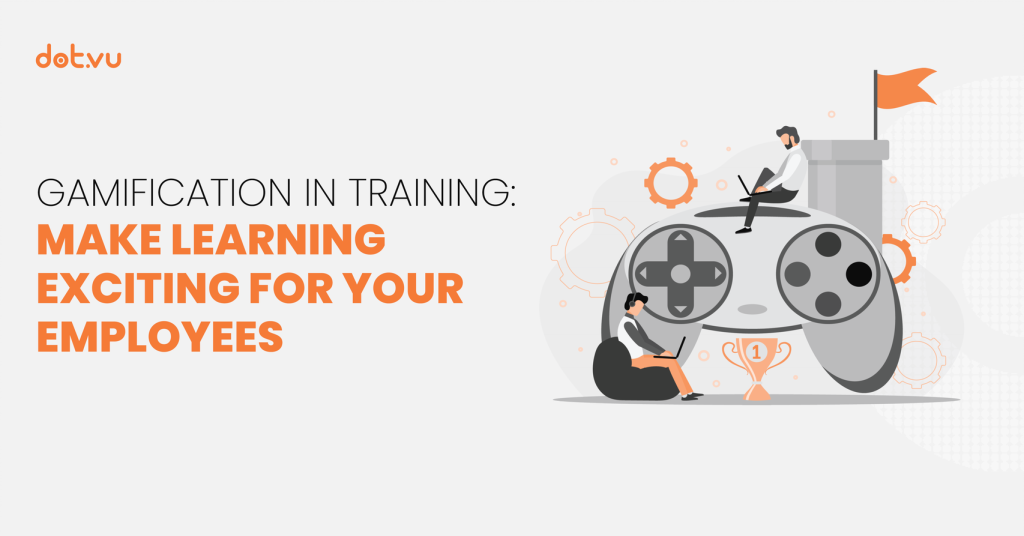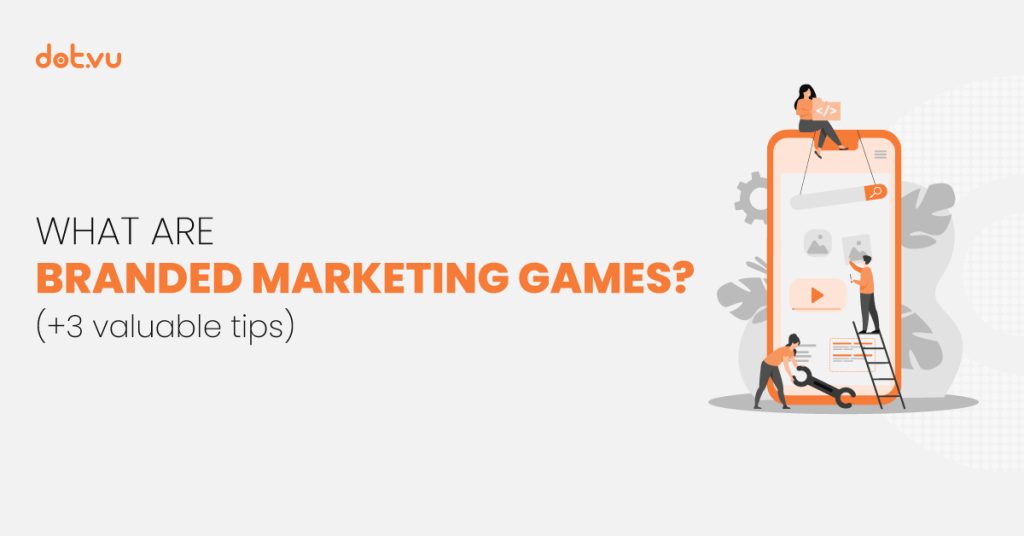
Do you know any Branded Marketing Games?
Of course, you do. Think about McDonald’s’ Monopoly game. The game is there every year in many countries around the globe, and it goes back to 1987. For those who don’t know the game, it is the following: you receive little Monopoly space tickets when you buy certain products from McDonald’s. The goal is to collect all the pieces of the same color to get a reward. Of course, you can also find instant-win prizes instead of space tickets, such as free fries and cheeseburgers.
Every year, McDonald’s succeeds in increasing their sales with this game. Lots of people will go to the restaurant just because of the game. The reason? The design of the Branded Marketing Game is perfect! Everyone knows Monopoly, and it brings back good memories. Plus, you have big and instant win prizes that incentivize participation. However, not only popular companies like McDonald’s can create a Branded Marketing Game nowadays! You can also create a unique and custom branded game that will take your customers’ breath away!
In this blog post, you will find the following:
- What are Branded Marketing Games?
- Why are Branded Games important for your marketing strategy?
- 3 tips for designing successful Branded Marketing Games
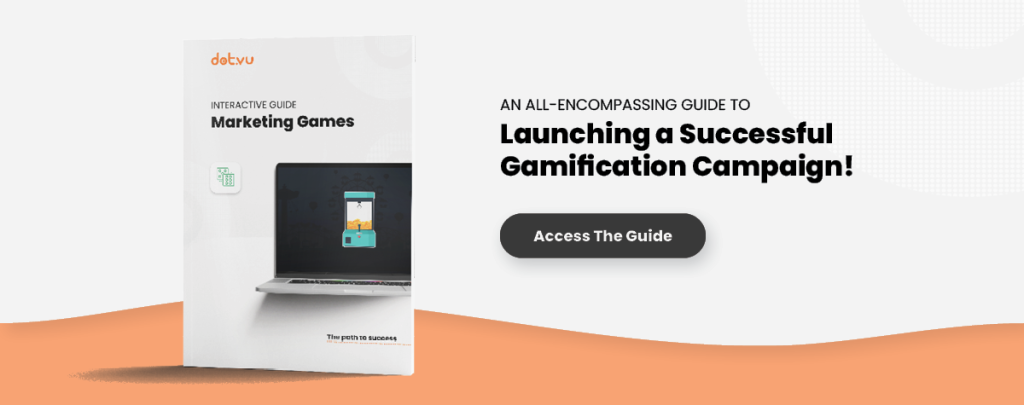
What are Branded Marketing Games?
Branded Marketing Games are games that companies use to attract new customers, engage their audience, promote their products, and grow their email list. They are also called Marketing Games, Branded Games, or mini-games. In other words, Branded Marketing Games encourage the company’s target audience to interact with the brand through gamified Interactive Experiences.
There are lots of different types of Marketing Games like games of chance, knowledge games, platform games, tapping games, puzzles, mazes, hidden object games, and strategy games. You can also digitalize old-school games like Tic, Tac, Toe or Rock, Paper, Scissor. The possibilities are endless.
You can convert any of these concepts into a short online game that will reflect your brand’s personality.
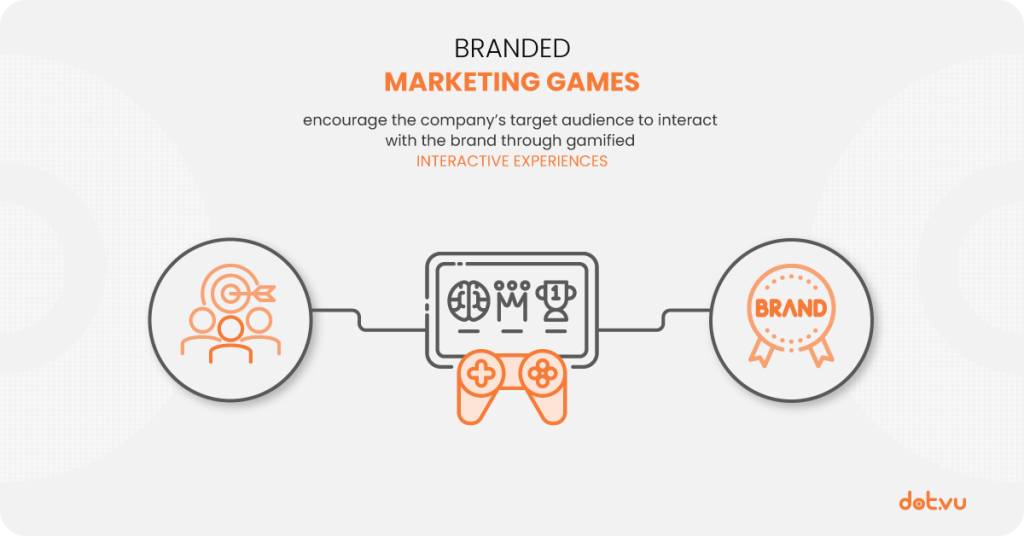
Why are Branded Games important for your marketing strategy?
There are 3 main reasons why Branded Marketing Games are a great addition to any marketing strategy.
Firstly, Branded Marketing Games are designed to reach your target audience where they are: on their phone! Did you know that the average person spends around 4 hours on their phone daily? Isn’t that crazy? That’s why it’s the best place to market your brand or your products nowadays. Usually, mini-games are not only compatible with phones, but they are also designed mobile-first.
However, reaching your audience in the right place isn’t enough anymore. Marketers like you and I have to become ingenious to cut the clutter and get our audience’s attention. Marketing Games are perfect for that. They are fun, they bring back childhood memories, and when designed well, they incentivize participation. So, instead of getting your users’ attention for approx. 8 seconds, like with other types of content, you’ll have their attention for the entire Interactive Experience.
Finally, Branded Games use the power of gamification in marketing. When using a game for marketing purposes, it’s usually the norm to include a prize that stimulates our playful and competitive nature. Therefore, customers are motivated to continue playing, not only because it’s fun, but also to improve their skills and increase their chances of winning.
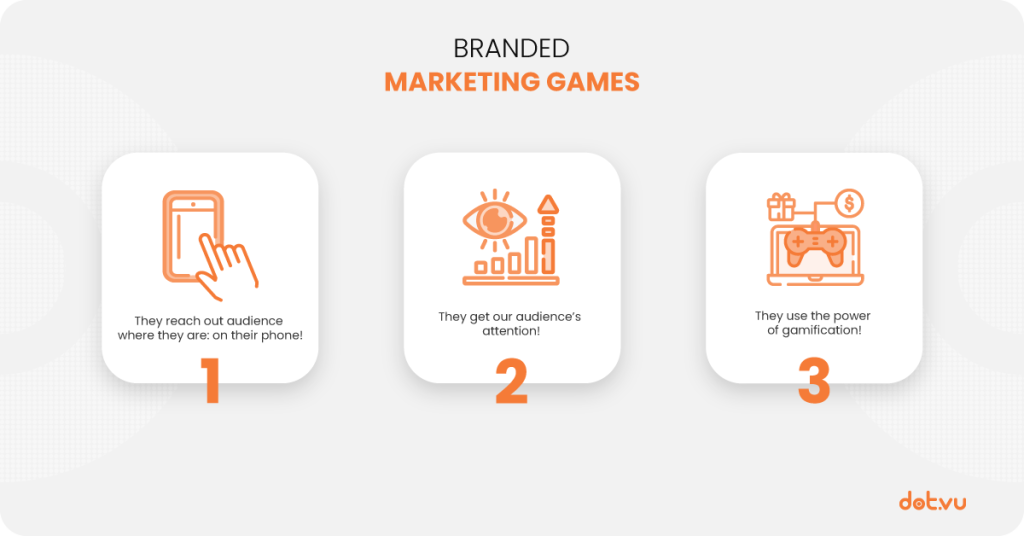
3 Tips for designing successful Branded Marketing Games
If you want to create Branded Games that adapt to your brand identity yet satisfy the needs of your customers, we have 3 valuable tips for an outstanding design.
There are 3 very important things you should keep in mind when designing a custom Branded Game:
1. Keep in mind your main goal
Before you start designing a branded game, it is crucial to determine your goal. There are 5 different goals you can choose from:
Goal 1: Attract new customers
You can use an audience mini-game to attract new customers to your website and generate awareness for your brand. When designing a game with this goal, you’ll want to incentivize participants to share your game with their friends and family. There are two ways of achieving that: you can design a game where participants need to cooperate with their friends to play or a game where they need to challenge them instead. These games are called Social Marketing Games!
Goal 2: Engage & educate your audience
You can also use a Marketing Game to engage your audience and, at the same time, improve your brand image. When designing a game with this goal, you want to make sure the link between the game and your company is strong, and that the game is fun and delightful for your audience. Great examples are old-school games where you replace the game elements with your products or your products’ features. For instance, you could have a Tic, Tac, Toe game where you’ll have two different items instead of X and O.
Goal 3: Grow your email list
Another important goal you could have would be to grow your email list. This one is straightforward to achieve. You can do it with any small game because the most important here is not the type of game but the prize or incentive you offer. Basically, you’ll want to add a gated lead form at the end of your game so that participants will know if they win only by filling out the form. Make sure the reward is valuable enough for them to share their information with you. Gated prizes and discounts are among the most effective ways to generate leads for your business.
Pro tip: Stick to the gated content best practices for optimal results.
Goal 4: Promote your products (a.k.a boost sales)
You can also use Branded Marketing Games to promote your products and boost sales. There are different ways to achieve that. You could create a quiz with a leaderboard about your products or your products’ features. The top 5 could win product samples. Or, you could also simply create small Marketing Games where winners could win discounts on specific products.
Goal 5: Develop your brand identity
Last, but not least, you can use custom Branded Games to develop your brand recognition. A well-tailored, unique design will make a positive impact. Over time, your audience will start associating the game with your brand. As previously mentioned, a branded game can reflect your brand’s personality. You can achieve that by using the right typography, colors, and CTAs.
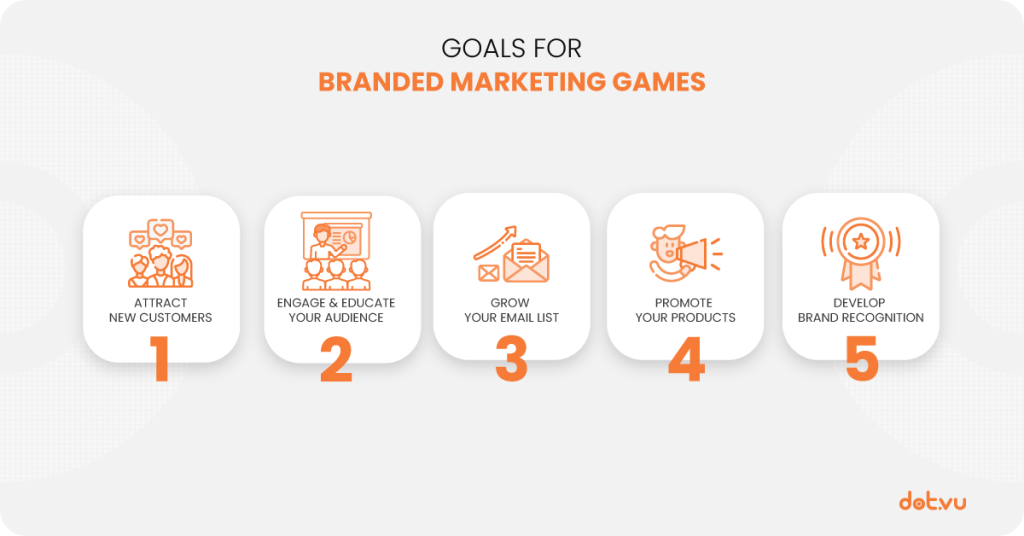
2. Incentivize Participation
Regardless of your goal, you’ll always want to incentivize participation. There are two ways to encourage your visitors to interact with your brand:
Add a contest
You can add a contest to your Marketing Games. For example, you could ask participants to spin the wheel to have the chance to win a discount or spot the difference to win a year of product supply. The prize should be valuable enough for them to participate and share their contact details.
Consider creating an instant-win contest to boost participation even further. People are way more inclined to participate if they can win something straightaway.
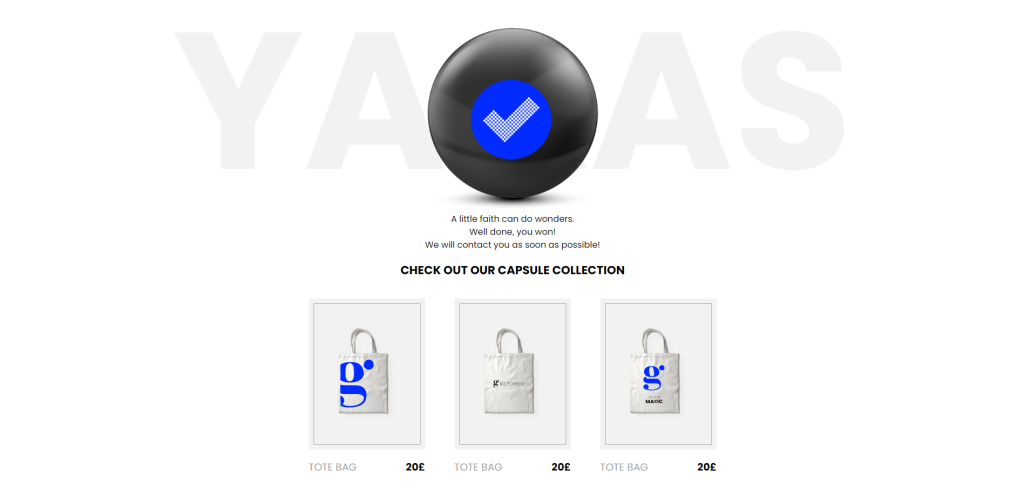
Add a leaderboard
Instead of using a contest, or even if you do, you can encourage your visitors to play with a leaderboard. Leaderboards are great for incentivizing participation because many people are competitive and want to compare themselves to others. With a leaderboard, you are playing on that.
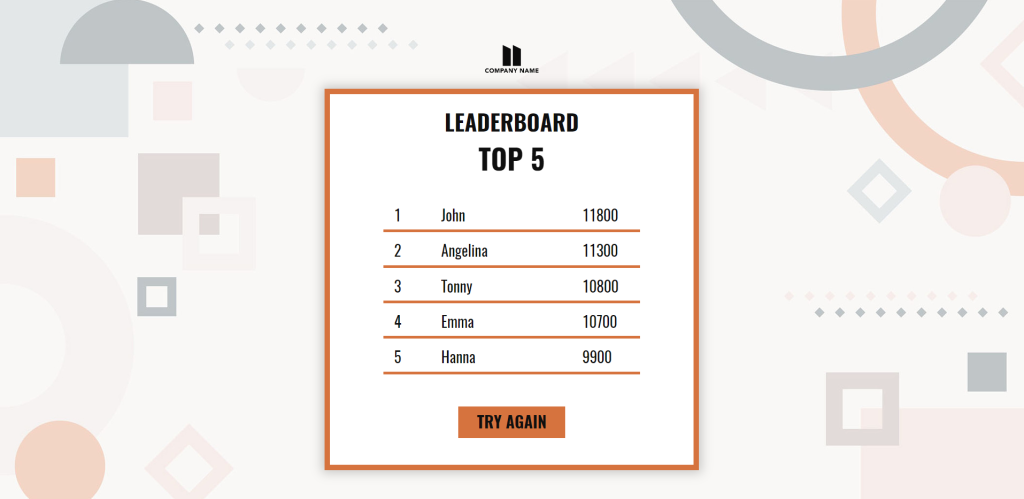
3. Brand it to fit your design guideline
Once you have decided on the whole strategy behind your Marketing Game, it is time to design it and brand it. How do you brand it? By changing the logo, colors, fonts, images, etc. to fit your brand guidelines. You want to make sure every participant links the game to your company in seconds. That’s very important because that’s how you’ll get the full benefits of your game.
Create your custom branded game today and amaze your customers!
Branded Marketing Games are not only available for large companies like McDonald’s. You can also create one at a relatively low cost. Branded Marketing Games are mostly beneficial for B2C companies. Yet, although it is more complicated, it can also be great for boosting your B2B interactive marketing strategy.
The best part is, you don’t need coding skills or large budget to create a branded game. Modern gamification platforms allow you to use customizable templates and publish your own game in a matter of hours or even minutes!
With Dot.vu, the leading Interactive Content platform, you can design your own branded game. Explore our marketplace with hundreds of templates. You can customize any of them by creating a free account. Happy gamifying!

